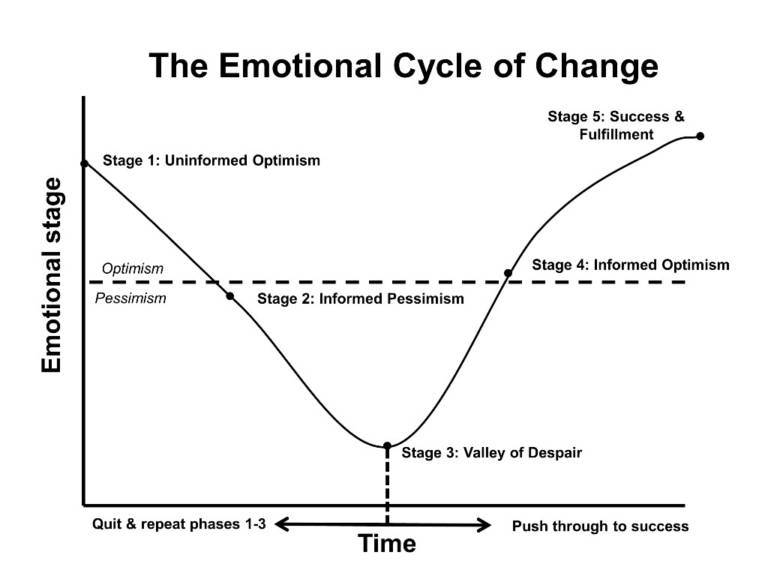The Emotional Cycle of Change
Change is never easy. Recognizing and managing the associated emotional phases of change can help individuals navigate their lives more effectively.
Christy Armendariz
6/25/20241 min read


The emotional cycle of change, as described by Don Kelley and Daryl Connor, outlines the typical emotional journey individuals experience when faced with change:
Uninformed Optimism: Initially, individuals approach change with a sense of optimism and excitement. They may not fully comprehend the challenges ahead but feel hopeful about the potential outcomes.
Informed Pessimism: As individuals become more informed about the realities and difficulties associated with the change, optimism gives way to a sense of pessimism or doubt. They start to realize the complexities involved and may feel overwhelmed or uncertain about their ability to navigate the challenges.
Valley of Despair: This stage is characterized by deep emotional lows and resistance to the change. Individuals may feel frustrated, anxious, or resistant to the disruption that change brings. It's a critical phase where perseverance and support are crucial to moving forward.
Informed Optimism: With time and effort, individuals begin to see progress and gain a deeper understanding of what the change entails. They start to feel more hopeful and optimistic as they develop skills and strategies to overcome obstacles.
Success and Fulfillment: Finally, as individuals master the change and integrate it into their lives, they experience a sense of accomplishment and fulfillment. They adapt successfully to the new situation and reap the rewards of their efforts.
This emotional cycle illustrates that change involves not just logistical adjustments but also a significant emotional journey. Recognizing and managing these emotional phases can help individuals navigate change more effectively and ultimately achieve success in their personal or professional lives.
